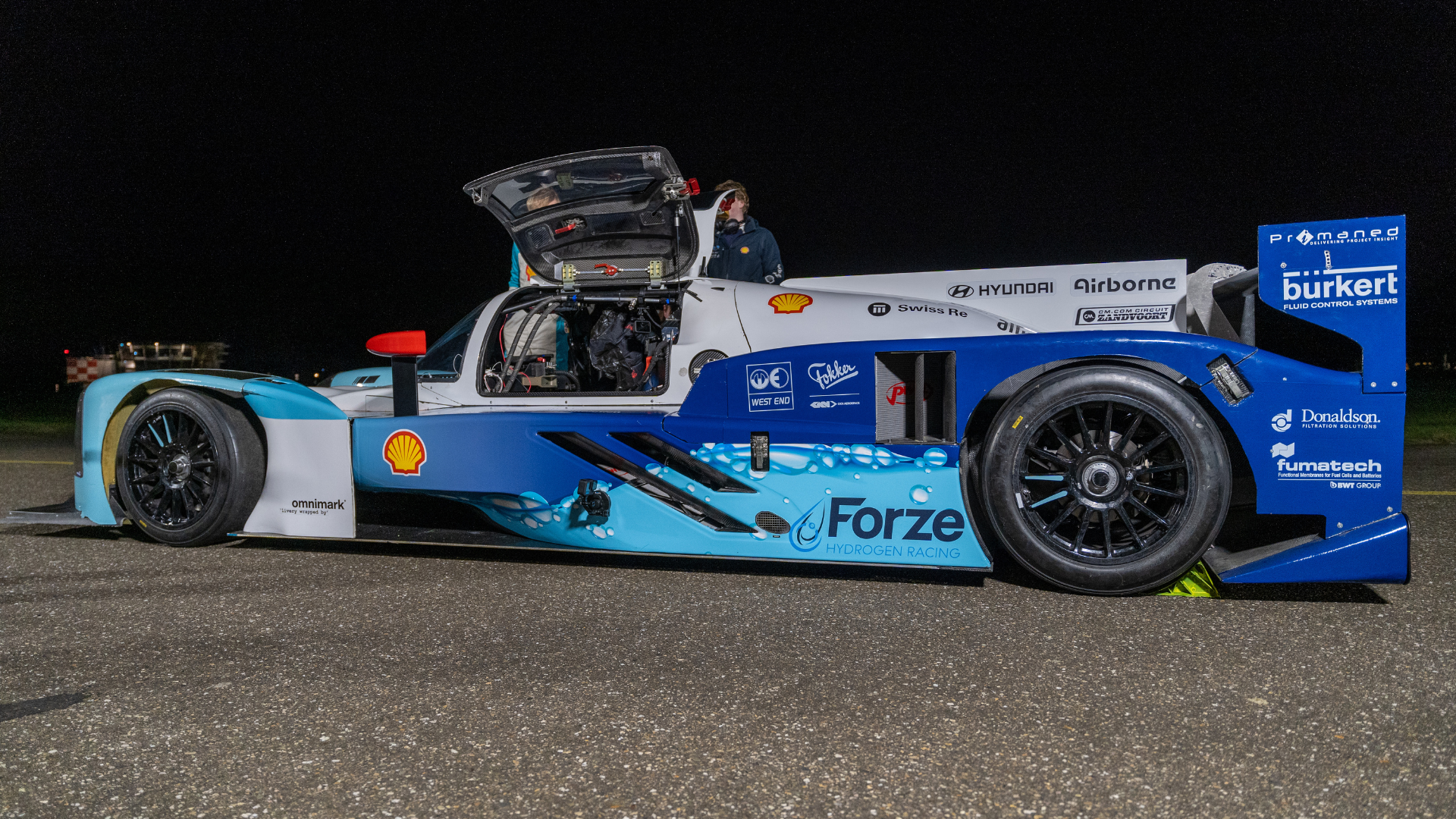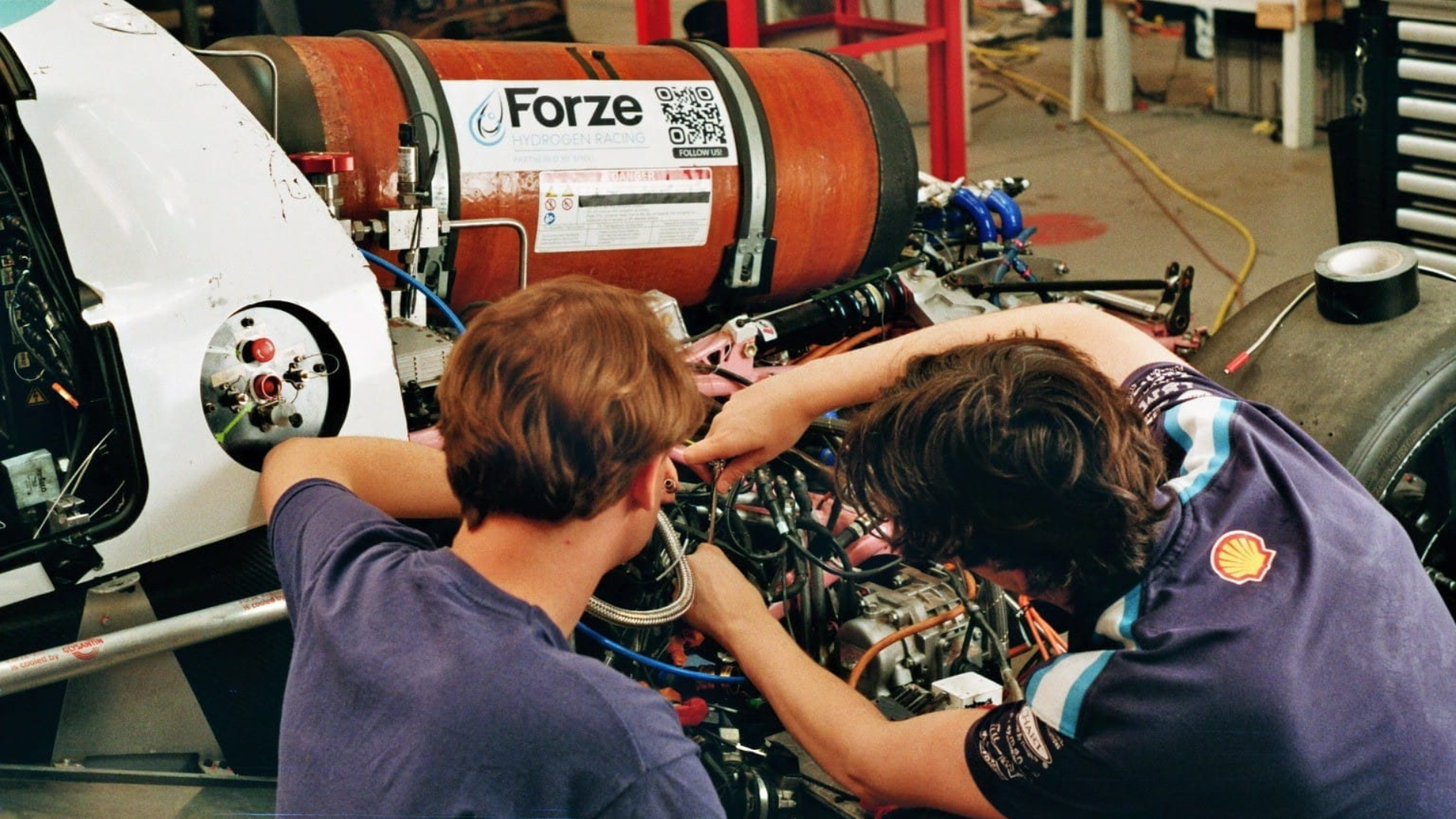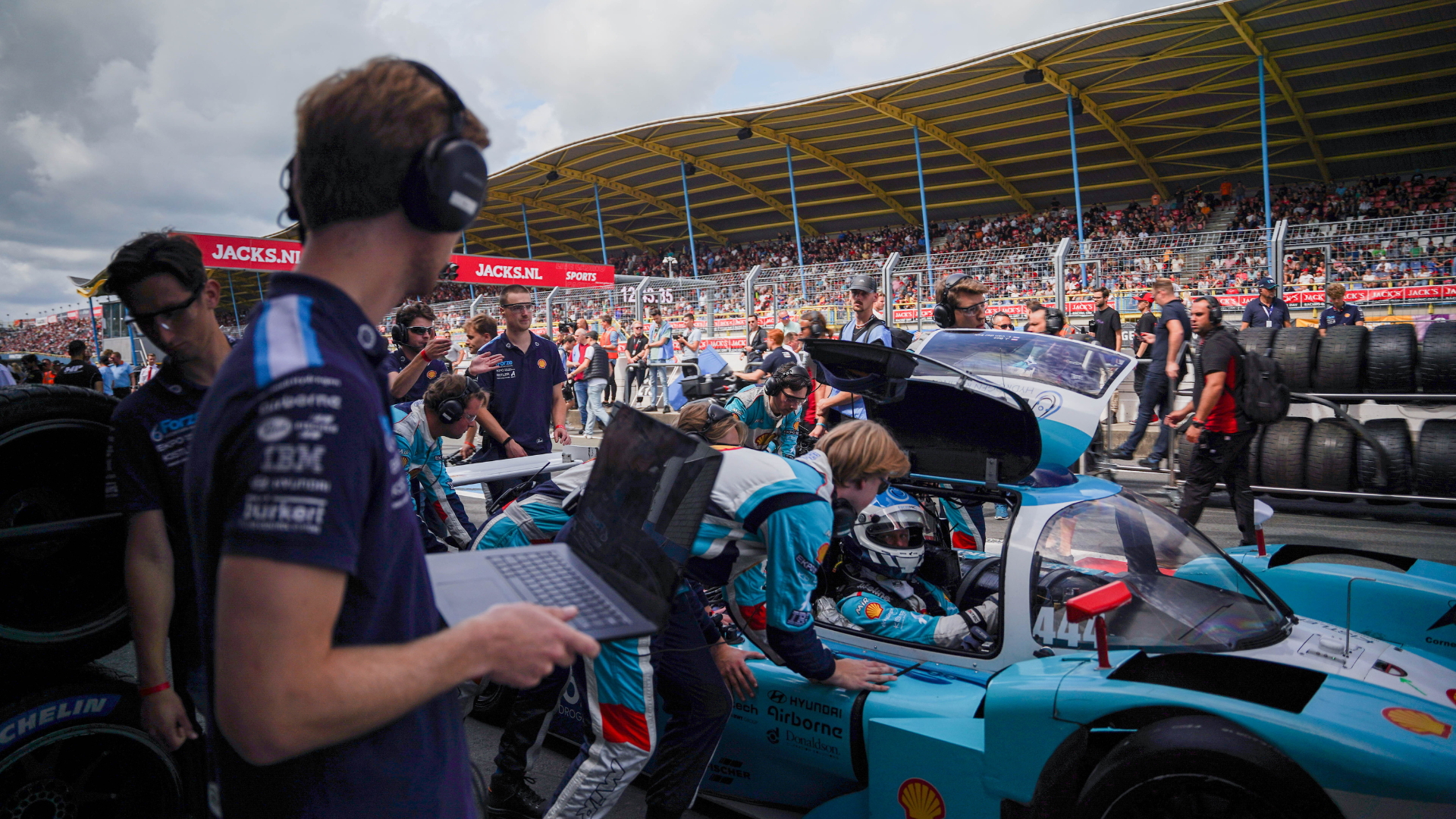
Spotlight: Forze Hydrogen Racing and the Future of Clean Speed
Author
Karbon-X
Author
Karbon-X
A Karbon-X Perspective on Innovation and Emissions
At Karbon-X, we’re always looking at what’s next; not just in carbon markets, but in the technologies, movements, and ideas that are actively reshaping what a low-emissions future can look like. Our work sits at the intersection of climate accountability and innovation, and every so often, we come across a team that’s pushing the boundary in a way that makes us stop and say: this is what forward momentum looks like.
Forze Hydrogen Racing is one of those teams.
Karbon-X and Forze operate with a similar mindset: real climate solutions require bold ideas, better tech, and systems that don’t settle for business-as-usual. Where we focus on accessible, science-backed carbon offsetting and emissions transparency, Forze is making a case for what clean mobility can look like — and they’re doing it on the racetrack.
Engineering for Impact
Forze Hydrogen Racing is an independent, student-led team based in the Netherlands, made up primarily of students from Delft University of Technology. They’re building cutting-edge hydrogen-electric race cars with one clear goal: to prove that sustainability doesn’t have to come at the cost of speed, power, or performance.
Their latest model, the Forze IX, is designed to be the fastest hydrogen-powered race car in the world. But it’s not just about setting records; it’s about showcasing hydrogen fuel cell technology in action. If it can work in motorsports, it can work in broader mobility systems, too.

How Hydrogen Fuel Cells Work
At the core of every Forze vehicle is a hydrogen fuel cell system, a technology that generates electricity through a chemical process, rather than combustion. This is what allows their cars to run at high speeds with zero emissions.
Here’s how it works:
Hydrogen Storage
Hydrogen gas is stored onboard the vehicle in high-pressure composite tanks at 700 bar. These tanks are lightweight, durable, and designed for safety. The hydrogen used is ideally “green hydrogen,” produced through electrolysis powered by renewable energy, meaning it's generated without carbon emissions.Fuel Cell Stack
The heart of the vehicle is the fuel cell stack, made up of many individual fuel cells layered together. Each cell contains two electrodes (an anode and a cathode) separated by a membrane. When hydrogen flows into the anode side, it’s split into protons and electrons.Electrochemical Reaction
The protons pass through the membrane to the cathode, while the electrons are forced through an external circuit, and that movement of electrons is electricity. It’s what powers the electric motor and drives the car forward.Combining with Oxygen
On the cathode side, the protons and electrons recombine with oxygen from ambient air to form H₂O — that’s right, the only byproduct is water vapor. No carbon dioxide. No NOx. No particulate matter.Electric Drive + Battery Buffer
The electricity from the fuel cell powers the motor, but there’s also supercapacitor onboard. This acts as a buffer for sudden bursts of power (like acceleration) and stores energy from regenerative braking, making the system even more efficient.
Why It’s a Game-Changer
What makes hydrogen fuel cell technology so compelling, especially in the context of high-performance racing, is its ability to deliver speed, power, and efficiency — all with zero tailpipe emissions. Unlike battery-electric vehicles that typically require longer charging times, hydrogen systems allow for rapid refueling, which is ideal for motorsport environments where quick turnaround is critical.
Both hydrogen and battery-electric technologies have an essential role to play in the energy transition. Each brings unique advantages depending on the use case. In sectors like motorsport and long-haul, heavy-duty transport, hydrogen’s energy density and fast refueling make it particularly well-suited. The key is finding the right solution for the right application, and Forze is showing just how powerful hydrogen can be when put to the test.
Hydrogen fuel cells also offer impressive gravimetric energy density. They carry more usable energy per kilogram than lithium-ion batteries, which translates to longer range and greater consistency over time — a critical advantage not just on the track, but in sectors like heavy-duty trucking, shipping, and aviation. These are industries where weight, power output, and downtime matter, and where battery-electric solutions often fall short.
Perhaps most importantly, the environmental upside is massive. When the hydrogen used is produced through electrolysis powered by renewable energy (commonly referred to as green hydrogen), the entire energy cycle, from production to vehicle propulsion, can be nearly carbon-free. And because the only tailpipe emission is water vapor, hydrogen fuel cell vehicles contribute nothing to urban air pollution, smog, or CO₂ buildup.
Forze’s work is a real-time demonstration of all these benefits. By putting hydrogen fuel cells in one of the most demanding and visible arenas—motorsports—they’re not only proving the tech’s viability, but they’re also shifting public perception about what clean energy can look like. It’s fast, efficient, and, when done right, remarkably clean.

Looking Ahead
Innovation like this doesn’t just push boundaries; it reshapes expectations. By bringing hydrogen fuel cell technology into a space historically dominated by combustion engines, Forze is accelerating not just cars, but the conversation around what clean mobility can look like. It’s a proof of concept that is both technical and cultural.
At Karbon-X, we see this kind of work as essential to the broader climate puzzle. Carbon offsetting plays a critical role in managing emissions today but so does investing in the systems that will define tomorrow. That includes supporting emerging technologies, decarbonizing supply chains, and building tools that help organizations measure and verify their climate impact with confidence.
Forze is doing what great innovators do. They are building, testing, refining, and putting their work out into the world, not to chase hype, but to move the needle. And while our work happens in different contexts, it is clear we are contributing to the same larger shift: one where low-emission solutions do not just exist, they lead.
We will be watching closely as their story continues to unfold, and as the race toward a cleaner, faster future picks up speed.
Learn More About Forze Hydrogen Racing
